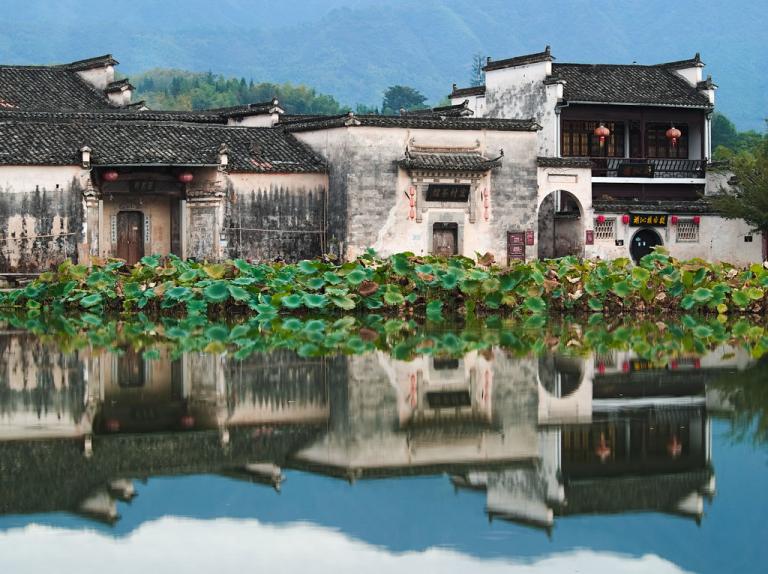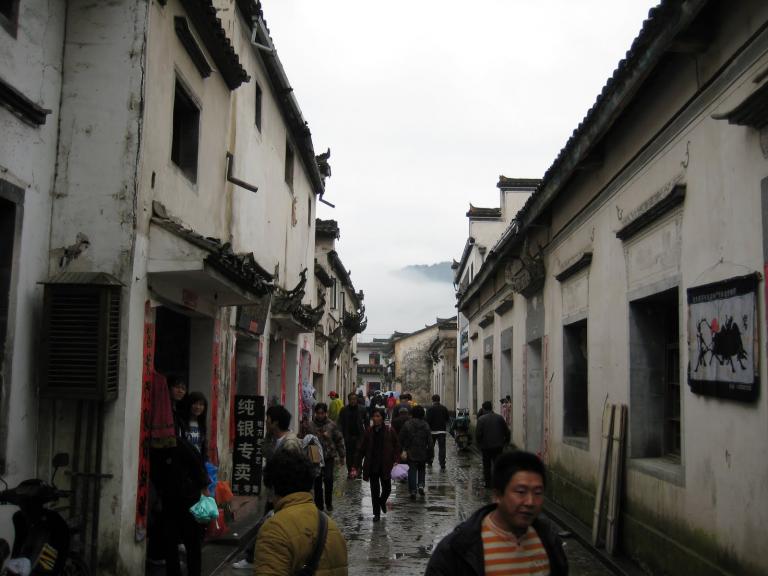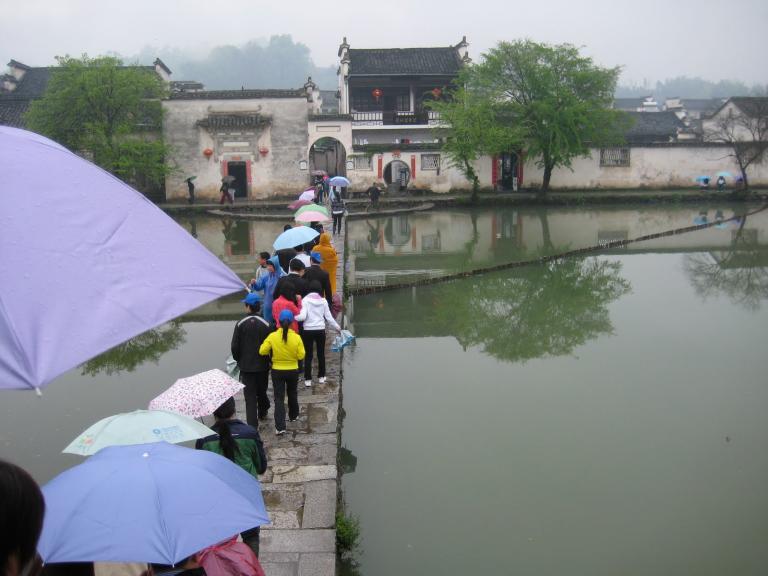Xidi and Hongcun Ancient villages in huizhou
4 min readIt was decided at the 24th Meeting of the Wor ld Heritage Committee held in cairns Australia, on November 30, 2001 to add the two ancient anhui villages of Xidi and hongcun to the list of world heritage sites.

Hongcun lies ll kilometers northwest of the county seat of yixian in southern anhu rovince and 65 kilometers from Tunxi, location of the airport for Huangshan mountain tourists. Construction on the village began during the Northern Song Dynasty(960-1127) nearly 1, 000 years ago. The ancient people of Hongcun were unique. They were at the forefront of the science of bionics, a unique talent they demonstrated in planning and building this buffalo-shaped village and manmade water system. The water system is designed in the image of a buffalo. The system brings in fresh spring water through the “buffalo s intestine that then runs in front of every household so that though the river is far every household has fresh water at their doorstep. When the water flows from the intestine”and enters the village, it goes into the crescent-shaped pool called the buffalo s stomach. After filtering, the water then makes its way around to all the households in the village and then out of the village to the South lake, known as the buffalo’ s bell.
It is then filtered one more time before releasing the water back the riverbed. The overall layout of the village resembles a water buffalo lifting its head and holding up its hooves The building of this kind of water system has been called a skill that is unique among the ancient villages of china. It has attracted experts from Japan, the Us, and germany to observe and carefully study it The village contains 140-some well-preserved examples of Ming and Qing dynast esidential buildings. One of the most representative of these is the beautiful and imposing Chengzhi Hall, a Qing Dynasty residence called the”Forbidden City of Common hich could be called the best in southern anhui province.From the natural environment outside of the village to the water system, streets, buildings, and even the interiors of the houses in the village everything in the village has been preserved as it was in the ancient village with practically no trace of the modernity. With its unique appearance and supreme beauty Hongcun has been called the”Chinese village in the picture.

Xidi lies 8 kilometers east of Yixian County. Construction began during the huangyou years(1049-1054) of the Northern Song nearly 1, 000 years ago. Yixian County was once part of the ancient Huizhou and was located in the western part of huizhou Prefecture. It became famous because of the posthouse that was located there The natural environment and scenerof Xidi are like those described by tao Yuanming in his story of the Peach blossom valley and Xidi is known as “Home in the Peach Blossom Valley. Experts and scholars call Xid a concise picture of traditional Chinese culture and museum of chinese homes of the Ming and Qing dynasties
Xidi is famous throughout China for its longs anding and brilliant traditional culture outstanding Hui style homes of the ming and Qing dynasties, simple and pure folk customs and the extremely well crafted hui style wooden carvings, engraved bricks, and stone sculptures. The most unique residences include daifudi, Yingfut ang, Hengrentang, Xiyuan and Ruiyuting. Most of the houses were built near water and have exquisitely and intricately carved pointed arches over the doors, curving walls with stone carving windows each with its own unique character, and stone benches, wells, and stone block bridges inthe streets. These buildings and objects all preserve the appearance they had during the Ming and Qing dynasties. The overall outward appearance of the village is in harmony with the local topography, topology, and natural scenery. It is very aesthetically pleasing and embodies the special flavor of the ancient villages of southern Anhui.
Many of the buildings in the village use black marble and two streams run through the village. Along with the 99 high-walled lanes and unique residences, they make the tourists feel as though in a maze.
At the main entrance to the village is a five-story stone memorial arch with three rooms and four columns erected in the sixth year of the Ming Emperor Wanli (1578 called the”Hu Wenguang Memorial Gateway,”also known as the”Xidi Memorial gateway.”The gateway, which is imposing and carefully built, is an obvious symbol of the status of the Hu family, as well as a fine example of Ming dynasty hui style stone gateways and the symbol of Xidi .
The village also has the grand and imposing Lufutang hall built during the reign ofQing Emperor Kangxi(1661-1722) in the lobby of which is a couplet that is a perfect melding of academia and architecture .
The fertile ground of Xidi has produced a number of famous and important officials and business magnates, including Ming Dynasty Prefectural Governor Hu Wenguang, Qing Dynasty grade Ii official Hu Shang zeng, and the extremely successful Qing dynasty businessman Hu Guansan.









